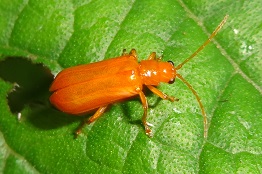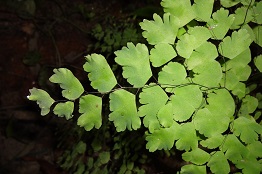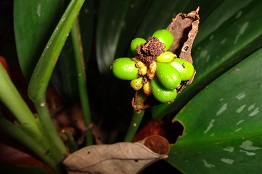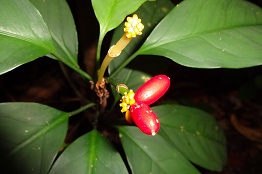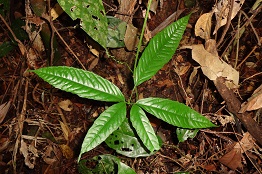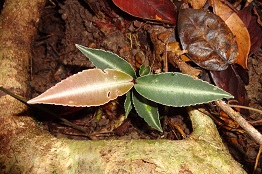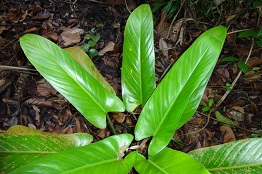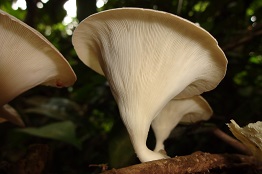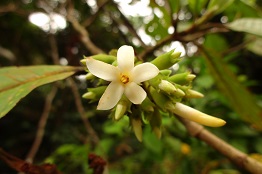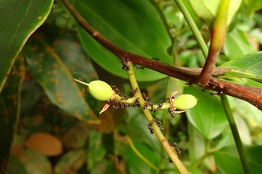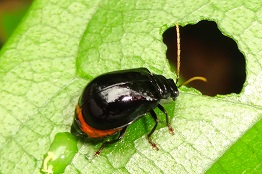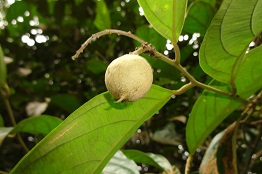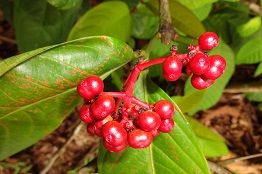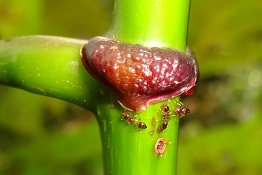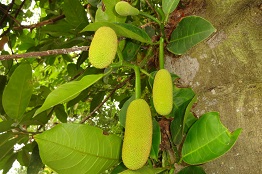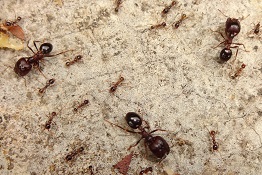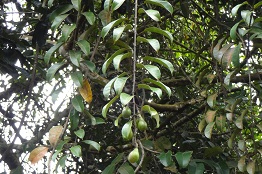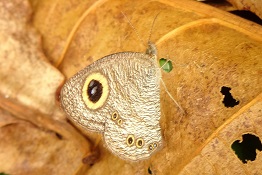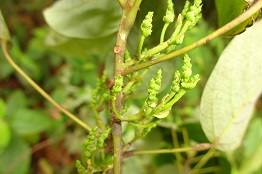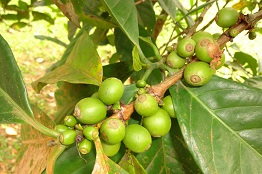Highlight:
Prompted by a friend that a rare Artocarpus dadah (Green Tampang) tree was being cut down
at Upper Seletar Park, I decided to pay a visit to check out exact location. This tree species is a relative to the edible
Jackfruit (Artocarpus heterophyllus) and
Chempedak (Artocarpus integer).
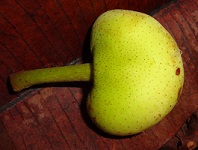
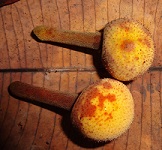 At the end, I did not find the remnant of the cut-down tree. The tree was probably there for a long time though I had not noticed it.
Coincidently, while roaming in the nearby swamp forest, I found an intact mature tree. The clue that lead me to the tree was the fallen
fruits on the forest floor.
At the end, I did not find the remnant of the cut-down tree. The tree was probably there for a long time though I had not noticed it.
Coincidently, while roaming in the nearby swamp forest, I found an intact mature tree. The clue that lead me to the tree was the fallen
fruits on the forest floor.
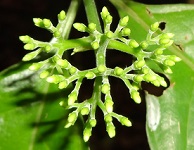
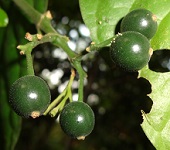 I was not able to take any good picture of the leaves as the tree was very tall and there was no low-hanging branches.
I was not able to take any good picture of the leaves as the tree was very tall and there was no low-hanging branches.
The lone Pavetta wallichiana was bearing mature dark-green berries while at the same time having new batches of flower buds on the same plant. I did had a chance to view its full bloom flowers during my last trip here.
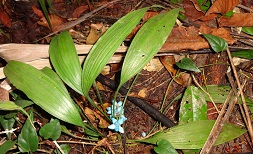
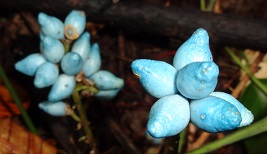 The most exciting moment was the sighting of these blue colour fruits hanging on a stalk which emerged from the ground. The leaves of the
plant resembled those from a palm. The identity of this plant (Peliosanthes teta) was
kindly provided by CK. It belongs to the lily family (Liliaceae) and not a palm
after all.
The most exciting moment was the sighting of these blue colour fruits hanging on a stalk which emerged from the ground. The leaves of the
plant resembled those from a palm. The identity of this plant (Peliosanthes teta) was
kindly provided by CK. It belongs to the lily family (Liliaceae) and not a palm
after all.
Blue colour fruits are relatively rare. Another plant in the lily family with blue colour fruits is Dianella ensifolia, a commonly cultivated ornamental plant locally.
These large palm-like leaves did not catch much of my attention when I first came across them, at least not until I saw a stalk of flower originated from the base of these leaves. No doubt that it was an orchid from the typical appearance of the flowers. I had read about this orchid (Plocoglottis javanica) from an article. So, the identification part was rather straightforward.
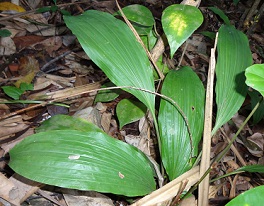
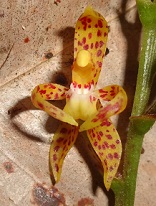

Besides the 3 new plants documented above, I managed to find another 3 new ones to add to my collection although all 3 were presented with only leaves without fruit or flower. One is a small size palm (Pinanga simplicifrons), another one is a large-leaf tree (Myristica maxima) while the last one is a climber with trifoliate leaves (Trichosanthes elmeri).
Despite finding 6 new plants, there were another two trees with fruits which I have yet to figure out their identity. [Update: Neoscortechinia sumatrensis and Gonystylus confusus]
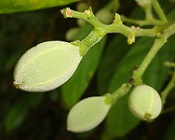
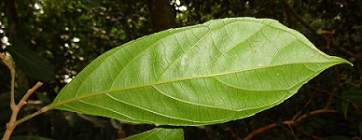
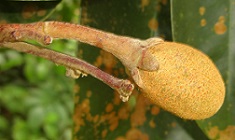
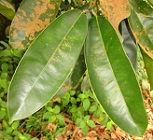
As usual, the forest was beaming with all kinds of tiny life forms and occasionally the mid-size ones. Highlighted below were the more interesting ones: (a) An unusually large long legged fly with orange body and blue eyes; (b) A bright green, translucent-bodied katydid known as Asiophlugis temasek, a common forest katydid that was only named recently in 2010; (c) A group of small termites and 2 Rambutan Ants (at the right side). There were at least thousands of the termites foraging or migrating within a small area.
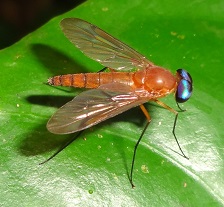
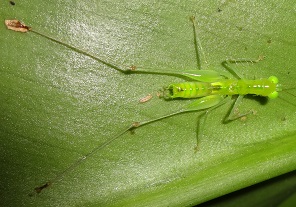
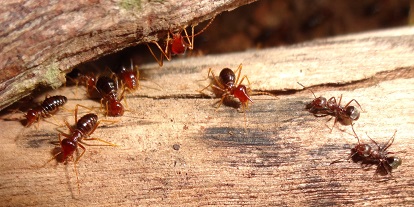
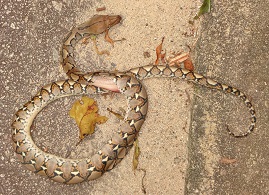 While exiting the reservoir park, I spotted
a motionless snake lying near a road kerb. Upon closer examination, it was a dead snake, probably the result from a roadkill. The body of
the young Reticulated Python (Broghammerus reticulatus) looked relatively fresh and
intact. The accident had probably occurred just a few hours ago.
While exiting the reservoir park, I spotted
a motionless snake lying near a road kerb. Upon closer examination, it was a dead snake, probably the result from a roadkill. The body of
the young Reticulated Python (Broghammerus reticulatus) looked relatively fresh and
intact. The accident had probably occurred just a few hours ago.
It was kind of sad to end the trip with a dead young snake. Nevertheless, this was another of those great field trips whereby I had collected a handful of new plant pictures. There were another few more plants that presented with only leaves that I was not able to identify. Some of them were shown in the picture gallery below.
Photo Gallery:
Below are selected photos from this trip arranged according to the sequence that they were taken. There is a text link under the photo that will direct you to more photos of the same species if they are available in my website.

DSC09953
Aphonoides sp.
(Cricket)
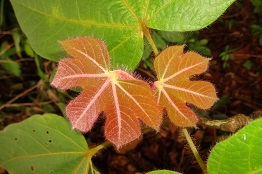
DSC00163
Sterculia macrophylla
(Broad-leafed Sterculia)

DSC00315
Prodasineura collaris
(Collared Threadtail)
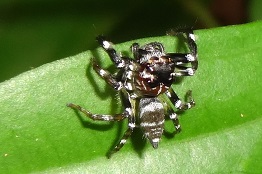
DSC00318
Jumping Spider
(Family: Salticidae)
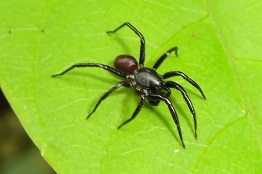
DSC00333
Castianeira sp.
(Ant-Mimicking Sac Spider)
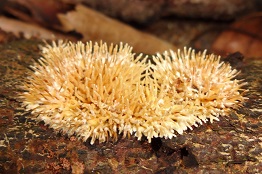
DSC00343
Radulodon copelandii
Crust Fungus
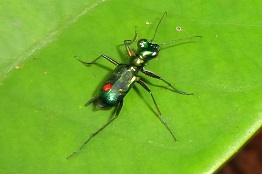
DSC00348
Tiger Beetle
Statistics:

